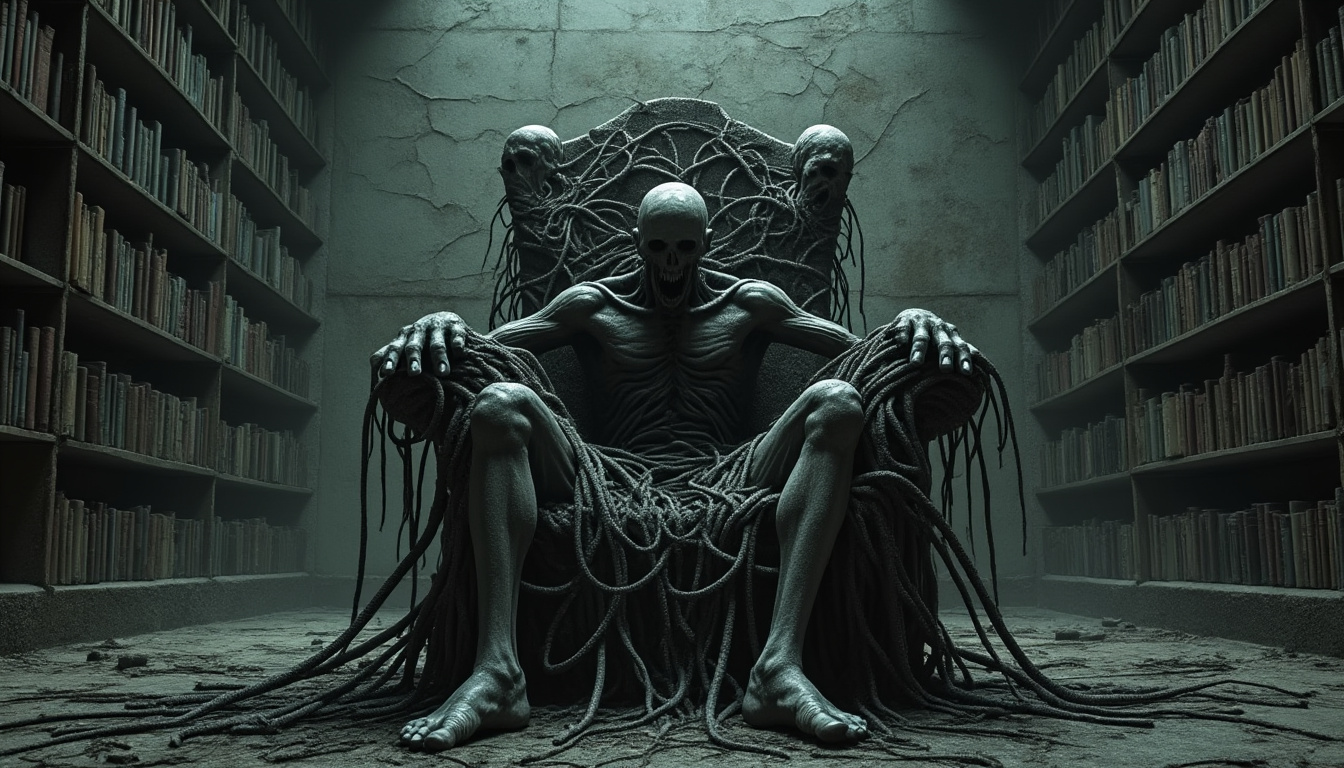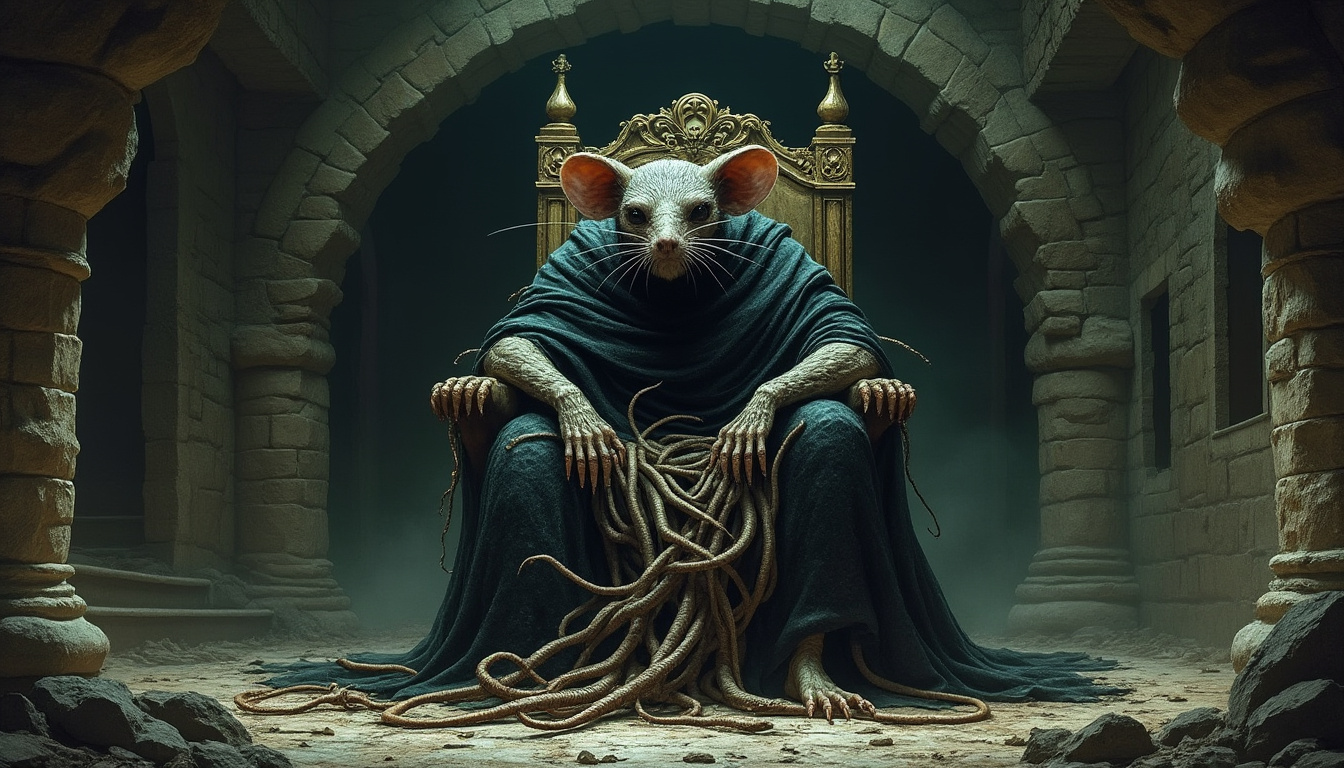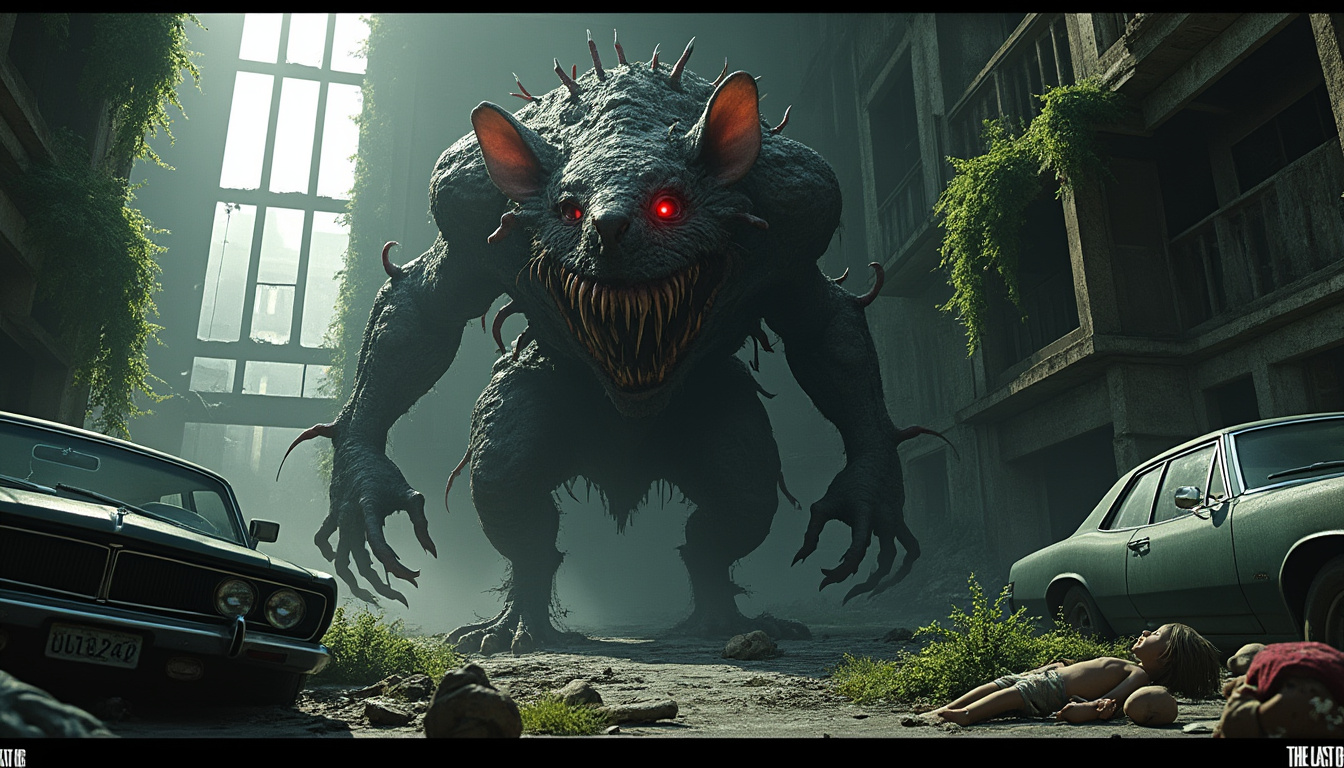The anticipation surrounding Season 2 of HBO’s The Last of Us has reached fever pitch, especially with whispers of the terrifying Rat King making its debut. This monstrous entity, a horrifying amalgamation of infected creatures, has become a focal point for fan theories, speculations, and discussions within the gaming and television communities. The enigmatic creature, which emerged from Naughty Dog’s video game franchise, holds immense potential for captivating storytelling and spine-chilling encounters. As enthusiasts eagerly dissect clues and Easter eggs delivered through trailers and episodes, the Rat King stands as both a narrative opportunity and a narrative challenge for the showrunners. This article delves into fan theories surrounding the Rat King and its anticipated appearance, drawing fascinating connections to its origins from the game and exploring its significance in the post-apocalyptic narrative landscape.
The Hints Leading to the Rat King’s Introduction in Season 2
The groundwork for introducing the Rat King in Season 2 began to crystallize with Episode 5, titled “Feel Her Love.” Fan theories propose that specific elements within this episode, including character dialogues and thematic undertones, hint towards the Rat King’s imminent presence. Early on, the episode features conversations among characters about the Lakehill Seattle Hospital, a setting intimately connected to the Rat King from the game, generating a palpable sense of dread among fans.

Exploring Key Moments and Contexts
In “Feel Her Love,” Hanrahan converses with Elise, a member of the WLF stationed on lower levels, provoking excitement among the fandom. Elise indicates that the ground floor had been cleared, but the basement remained a potential hotspot for a lurking threat. This foreshadowing establishes critical context for the horror awaiting the characters, as well as viewers, effectively building suspense and curiosity.
- The conversation includes crucial lines such as, “All that was left was the basement; B1, B2, and B3.”
- The mention of a previous expedition into B1 without finding anything furthers the sense of lurking danger.
- Elise’s line, “The whole floor was empty… not even rats,” stands out, suggesting an unsettling tranquility that could precede a horrific discovery.
Fans believe that these moments are significant precursors to the Rat King scenario; it’s almost like a macabre setup for the storyline. The Rat King, an adversary comprised of multiple infected entities, requires an intricate narrative build-up that this episode appears to initiate. Its persona combines antagonistic forces in a way that compels the characters and increments the series’ horror elements.
| Element | Significance |
|---|---|
| Lakehill Seattle Hospital | Direct link to the Rat King’s cancerous origin. |
| Character Dialogue | Foreshadows impending threats and horror. |
| Basement Mention | Potential site for Rat King’s deadly revelation. |
Furthermore, the introduction of spore mechanics in Episode 5 is similarly suggestive. These spores allude to the foundational Cordyceps lore that underpins the franchise and serve as a tangible element of horror that tracks the path towards the Rat King. Horror fans often draw parallels between the ominous environment within video games and the suspenseful atmospheres in horror films. As such, the foreshadowing techniques employed align with conventions seen in classic horror narratives.
In-Depth Analysis of the Rat King’s Character and Lore
The Rat King isn’t merely another creature waiting to terrorize the protagonists; it embodies profound themes of infection, survival, and monstrous transformation. Its character design reflects a grotesque synthesis of infected individuals—primarily stalkers, clickers, and bloaters—creating a nightmarish entity that challenges players’ resolve in the game. This amalgamation represents the devastating consequences of the Cordyceps outbreak, where humanity’s fragility is front and center.

The Symbolism Behind the Rat King
The name “Rat King” itself draws inspiration from a real phenomenon wherein a group of rats becomes entangled, potentially representing societal collapse, loss of individuality, and the primal survival instinct. The thematic weight of such a creature encapsulates a broader commentary on how societal structures crumble during catastrophic events—a fitting reflection of the show’s post-apocalyptic landscape.
- The Rat King serves as a manifestation of moral decay.
- Its multiple identities symbolize the loss of humanity.
- The chaotic nature of its existence underscores the ferocity of survival instincts.
In essence, the character analysis of the Rat King transcends mere horror; it probes the emotional depths of infected individuals redefined as antagonists. This narrative richness invites the audience to reflect on concepts like loss, conversion, and the survivalist drive shared among individuals in dire circumstances.
| Aspect | Description |
|---|---|
| Identity | A combination of various infected characters. |
| Origins | Evolved from the first infected victims of the outbreak. |
| Thematic Undertones | Represents societal decay and survival instincts. |
In grappling with the Rat King, characters like Abby are expected to delve deeper than mere survival; they will confront the emotional ramifications of a once-human figure now turned into a harbinger of terror. This complexity heightens audience investment in characters navigating the harrowing world around them and invites speculation about possible character arcs in which empathy may overshadow antagonism.
Connecting Fan Theories to Gameplay Experiences
As avid fans of The Last of Us franchise, many have shared their expectations about how the adaptation could diverge or align with the gaming experience. The incorporation of the Rat King has prompted a lively discourse among fans, relaying their predictions for its presentation on screen. This dialogue often reflects personal gaming experiences while visualizing how such encounters may unfold within the HBO series.
The Anticipated Gameplay Elements
Fans anticipate that the psychological aspects of fear and dread, central to the Rat King encounter in the game, must be replicated on screen for the adaptation to resonate. While various fan theories suggest alternative introductions, the consensus leans toward a faithful capture of the encounter’s high stakes.
- Dialogue-driven moments that reveal Abby’s feelings of dread.
- Visual cues establishing the environment as oppressive or claustrophobic.
- Musical scores that amplify tension and suspense.
Many enthusiasts argue that the first gameplay experience where players face off against the Rat King was traumatic and memorable. The struggle illustrates how pivotal confrontations can transform narrative arcs—something that the series aims to encapsulate. It’s these discussions that fuel excitement and drive community engagement around fan theories.
| Gameplay Element | Fan Expectations |
|---|---|
| Tension Building | Maintain suspense through character development and cinematic techniques. |
| Cinematic Representation | Depict the horror essence of the Rat King faithfully. |
| Character Evolution | Allow Abby’s evolution as a survivor to impact how she engages with the Rat King. |
Conversations revolving around expectations for the Rat King’s introduction reflect not only a desire for visual fidelity but a longing for the emotional core that connects gaming experiences with television storytelling. Fans hope that the show can effectively utilize emotional engagement while delivering gripping action to elevate the series.
Player Perspectives and The Community Response
Fan theories surrounding the Rat King aren’t merely theoretical constructs—they encapsulate the richness of communal engagement in discussing narratives and character arcs. Players who have traversed the world of The Last of Us often express their sentiments and personal reflections on forums and social platforms, allowing a shared enthusiasm to flourish. The discussions thrive on Reddit threads and gaming community forums, exemplifying the robust engagement typical among dedicated players.
The Collective Fan Experience
Fans consider potential character encounters with the Rat King as pivotal moments not only for character growth but for the narrative’s overall arc. Discussions range from exploring the horror implications and possible character transformations to analyzing gameplay mechanics that could extend into the show’s narrative construction.
- Techniques for tension-building in storytelling are shared.
- Expectations of how Abby interacts with the Rat King are debated.
- Personal stories of encountering the Rat King in the game enliven discussions.
These exchanges foster a sense of community where players further their understanding of the larger themes at play in both the game and the show. Such collaborative discourse enhances excitement about Season 2, as fans craft a rich tapestry of predicted events and character developments.
| Activity | Platform |
|---|---|
| Discussion Threads | |
| Gameplay Insights | Game Forums |
| Video Analysis | YouTube |
As Season 2 progresses, the ramifications of the Rat King’s appearance are certain to resonate with viewers. The excitement surrounding potential encounters will continue to spark conversations about survival, horror, and the frameworks that define post-apocalyptic narratives in entertainment.


